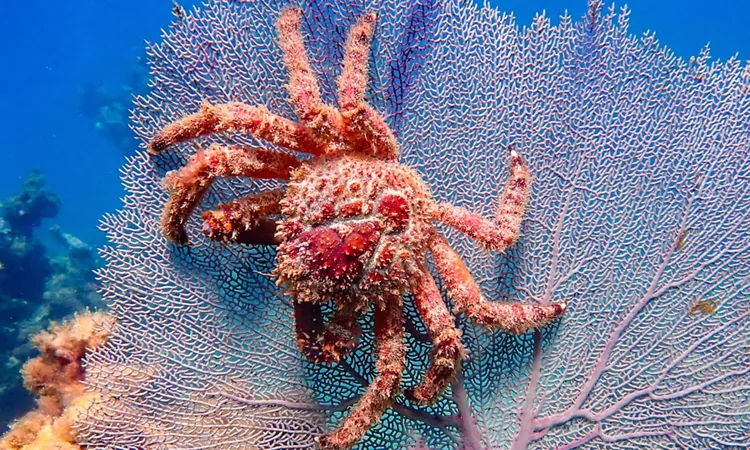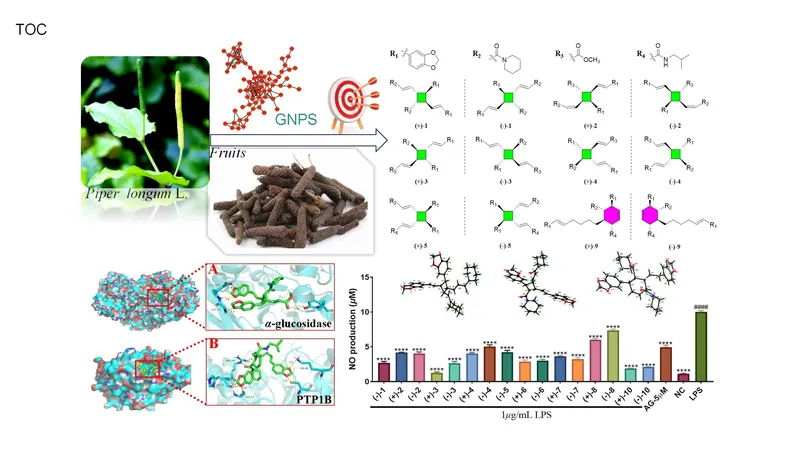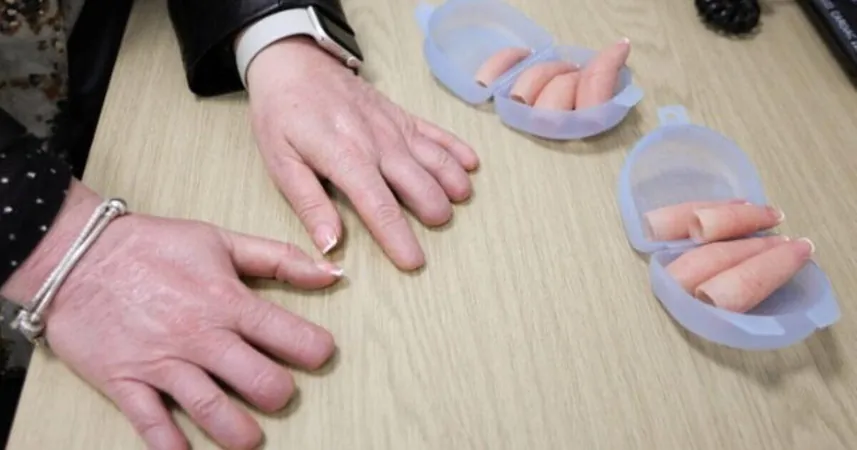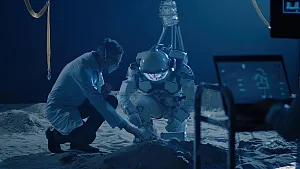
Tiny Crabs: The Unsung Heroes Protecting Coral Reefs from Destructive Starfish
2025-03-20
Author: Sarah
Coral reefs are under siege from various threats, with the notorious crown-of-thorns starfish (COTS) leading the charge with its voracious appetite for coral. This starfish can decimate vibrant coral populations at alarming rates, leaving ecologists and marine enthusiasts alarmed about the future of these vital ecosystems.
Historically, researchers have debated the reasons behind the fluctuating population cycles of crown-of-thorns starfish, which can cause widespread devastation from Australia’s Great Barrier Reef to other regions in the Indo-Pacific. Many explanations have zeroed in on factors like changing ocean conditions or the absence of natural predators. However, a groundbreaking study has revealed an unexpected ally in the fight against these voracious starfish—tiny decapod crabs.
The Key Role of Small Crabs
Researchers employing cutting-edge environmental DNA (eDNA) techniques uncovered a surprising connection between small crabs and the populations of juvenile crown-of-thorns starfish. Dr. Sven Uthicke from the Australian Institute of Marine Science noted that their study, which spanned over 1,000 km of the Great Barrier Reef, discovered traces of COTS DNA in the guts of seven different decapod species. Notably, locations plagued by starfish outbreaks showed a startling absence of these crabs.
These tiny crustaceans, often hiding in crevices and under coral rubble, play a crucial role in maintaining the health of coral ecosystems. By consuming juvenile crown-of-thorns, they help prevent these starfish from reaching adulthood, where they can inflict substantial damage on coral reefs.
The Impact of Crustacean Predation
Dr. Uthicke emphasized the efficiency of crabs in controlling starfish populations: “Crabs can consume up to 20 juvenile COTS daily, a stark contrast to larger predators like fish or tritons that feed on adult starfish much less frequently.” This predation pattern suggests that populations of these small crabs could be an essential barrier against the devastating impacts of crown-of-thorns.
The study highlights that protecting juveniles is critical; if crabs continue to diminish, juvenile starfish may thrive instead, posing an increased risk to already vulnerable coral communities.
Broader Implications for Reef Health
This research not only sheds light on the relationship between crabs and starfish but also emphasizes the need to understand the complex interactions within reef ecosystems. The absence of small cryptic predators may contribute to rising starfish populations, suggesting that collaboration among all reef inhabitants is essential for maintaining balance.
In a world where the pressures on coral reefs are intensifying due to climate change and pollution, recognizing the importance of even the tiniest contributors to reef health is crucial. Conservationists must broaden their focus beyond adult starfish management and consider promoting conditions that favor the survival of beneficial crabs and other small creatures.
Conservation Strategies Moving Forward
The findings prompt a need for strategies that protect crab populations by conserving their habitats—structurally complex environments that provide essential hiding spaces from larger predators and environmental threats. As reefs degrade, these habitats are compromised, leading to a decline in crab numbers and thus an increase in juvenile starfish survival rates.
Future research efforts will further investigate what environmental factors influence crab populations, potentially guiding restoration projects that include artificial reefs designed to foster crab communities. This proactive approach could create a sustainable cycle of natural pest control, minimizing the need for drastic measures such as large-scale starfish culls.
A Call to Action
As conservationists push for immediate action against the crown-of-thorns starfish, the role of hidden heroes like small crabs must not be overlooked. By strengthening the populations of these tiny yet mighty crustaceans, we stand a better chance of preserving and revitalizing coral reefs under threat.
In conclusion, this study opens the door to a more nuanced understanding of reef dynamics, fostering hope that with strategic conservation efforts, we can maintain the delicate balance of these underwater ecosystems for generations to come.
Stay tuned for more updates on marine research and conservation success stories, and join the movement to protect our beautiful ocean environments!




 Brasil (PT)
Brasil (PT)
 Canada (EN)
Canada (EN)
 Chile (ES)
Chile (ES)
 Česko (CS)
Česko (CS)
 대한민국 (KO)
대한민국 (KO)
 España (ES)
España (ES)
 France (FR)
France (FR)
 Hong Kong (EN)
Hong Kong (EN)
 Italia (IT)
Italia (IT)
 日本 (JA)
日本 (JA)
 Magyarország (HU)
Magyarország (HU)
 Norge (NO)
Norge (NO)
 Polska (PL)
Polska (PL)
 Schweiz (DE)
Schweiz (DE)
 Singapore (EN)
Singapore (EN)
 Sverige (SV)
Sverige (SV)
 Suomi (FI)
Suomi (FI)
 Türkiye (TR)
Türkiye (TR)
 الإمارات العربية المتحدة (AR)
الإمارات العربية المتحدة (AR)